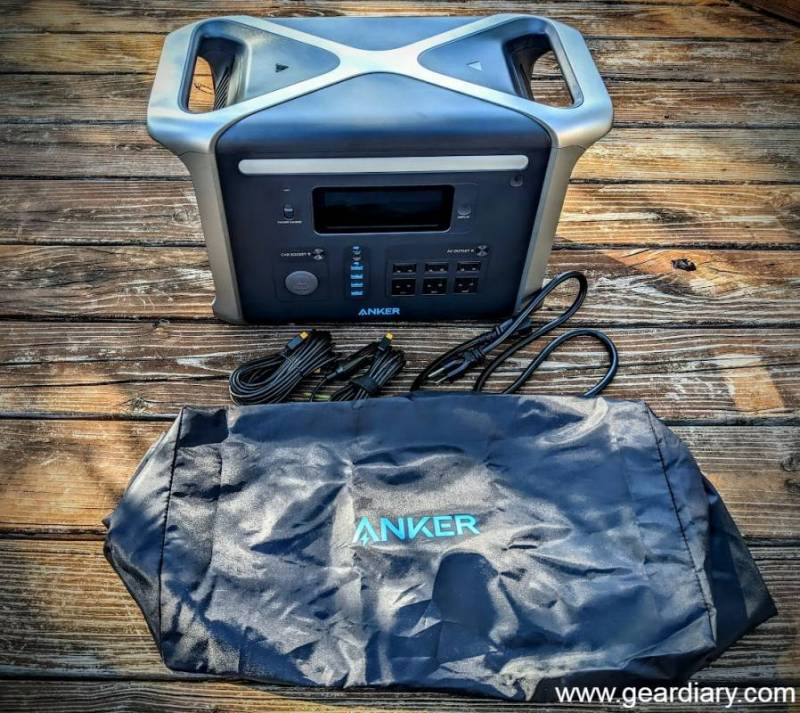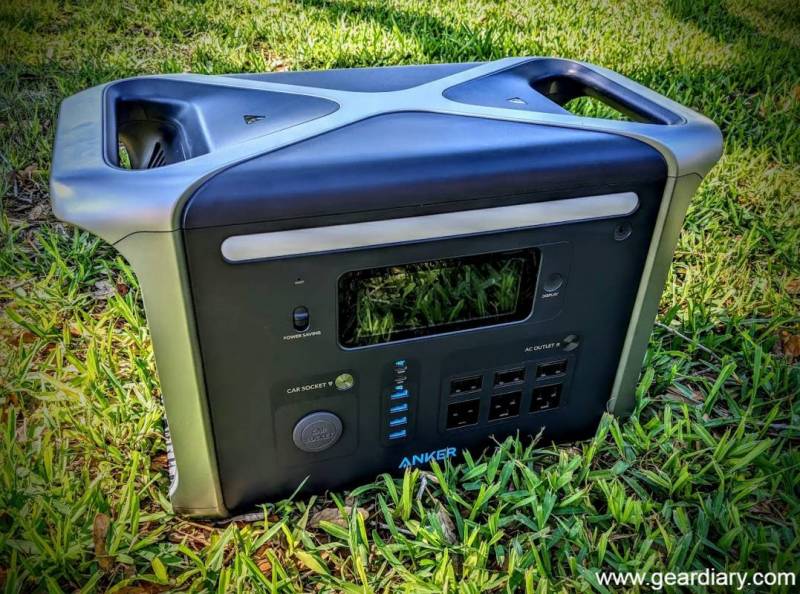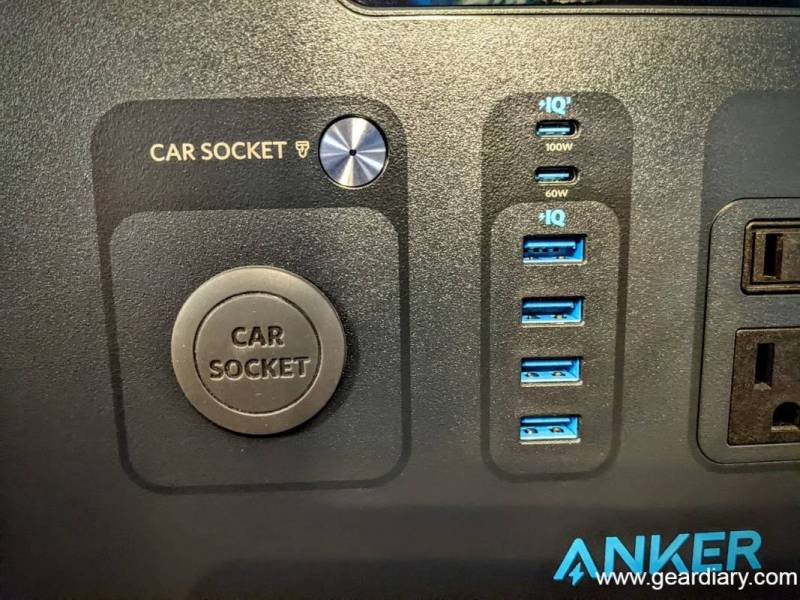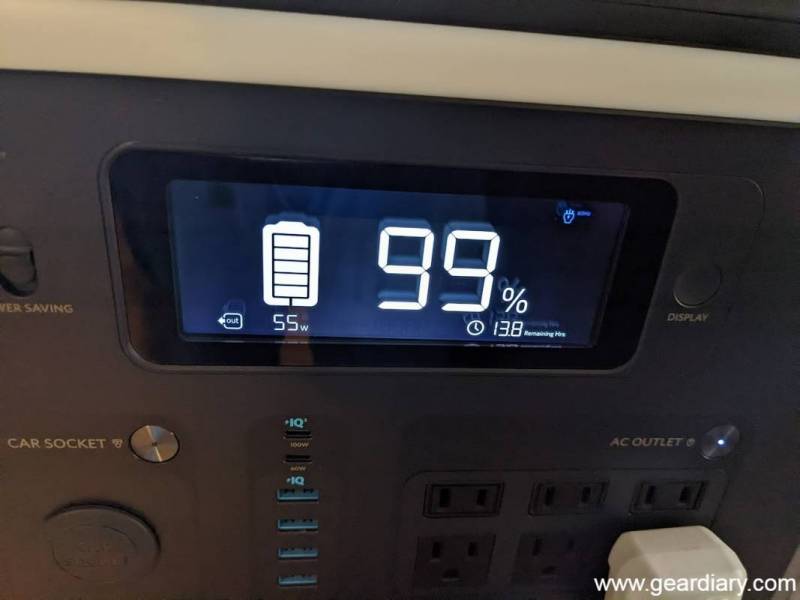The Lowdown
The Anker 757 PowerHouse is the perfect portable power option for anyone who enjoys camping and tailgating while also providing the security of backup power during an emergency. Best of all, since it uses a battery instead of combustion, you never have to worry about carbon monoxide being an issue, as it is completely safe to use indoors or in a vehicle.
Overall
Pros
- Portable
- Easy to carry with the built-in handles
- Plenty of plugin options
- Display provides plenty of info, including the time remaining when it is in use
- Multiple methods to recharge
- No worry of carbon monoxide poisoning
- Safe to use in the house or a vehicle
Cons
- It’s expensive, but you get what you pay for
Anker is well known for power and charging accessories; we have reviewed many of their products, and we’ve found their build quality and performance to be consistently good. The company has upped the ante by recently releasing the Anker 757 PowerHouse, cementing its place in the large-form power bank space. I’ve got a review unit; let’s check it out.
The Anker 757 PowerHouse is a 1229Wh/1500W portable power station. Armed with 13 charging ports and several recharging options, the 757 would be the perfect companion for a camping trip or in an emergency.
The station is powered by premium LFP (LifeP04) batteries which will remain healthy after 3,000 complete charging cycles, while similar Lithium-Ion options usually last through an average of 500 cycles.
The box comes with the Anker 757 PowerHouse, an AC charging cable, a car charging cable, a parallel solar connection cable, and a dust-proof bag.
This package should cover all of the possible charging options, and the dust cover adds a nice piece of protection in between uses. The AC charging cable does not require a large transformer box which is a huge positive for me.
Anker has included Hyper Flash technology in the 757 PowerHouse, which promises to recharge the battery to 80% in an hour and 100% in 1.5 hours if connected to a wall plug.
Whether using the power station for outdoor activities or during an emergency, being able to recharge it quickly is a must. The Anker 757 PowerHouse accepts up to 300W solar panel input and can recharge to 80% in 3.6 hours. Data based on Anker’s testing indicates that the 757 charges 5x faster than other options on the market.
Weighing in at 43.9 pounds, the Anker 757 PowerHouse is a bit heavy, but it’s still portable considering the large capacity and features included.
It measures 18.2″ x 11.3″ x 9.3″ and is designed with handles making it easy to carry; it is pretty compact, considering the amount of power it holds.
With the included outlets, you can simultaneously charge 13 devices. Of course, you might never need that many, but it is good to have options!
Six 1500W (Pure Sine Wave) AC outlets are included. Only three of the AC outlets can accept a grounded plug, but there should be plenty of room for almost anything you need to power.
Four USB-A ports with 12W, 100W, and 60W USB-C outputs are included. These USB ports are more than enough for my entire family to charge all our devices simultaneously.
One car 120W car outlet is also included.
The back of the Anker 757 PowerHouse contains the recharging inputs and breaker reset under a protective cover. I prefer having these on the rear of the battery, as it keeps the front clear for use.
The Anker 757 PowerHouse’s display is large and easy to read. Input and output watts are indicated as well as what kind of devices are plugged in.
I was running a large fan when I took this photo, and you can see the remaining time the battery should provide. As you plug in more devices, this will be important to guide the remaining time you can continue that workload.
As if these features weren’t enough, the Anker 757 PowerHouse also includes a built-in night light across the top front. The light has several brightness settings along with an SOS feature; it will be very handy while camping or when using the power station at night.
The light uses very little power, so there should be no adverse effect on battery life.
We have been running several items from the battery and have yet to have an issue with needing extra power. You can plug in a pellet grill, spend the day smoking meats, and charge all of your devices.
Air conditioners need too many volts to run, but my camper ran all of the lights and refrigerator just fine using this device. Anker provides a decent guide on what to expect for charging different devices.
The Anker 757 PowerHouse is ultra-portable and yet can provide so much power. This 1229Wh/1500W power station should be enough to get you through a power outage or use while camping or tailgating.
The design is attractive, and all ports are easy to use. I love the bright screen and the fact that it estimates the amount of battery left under the current load.
All of the cords are provided to recharge, and multiple methods make the Anker 757 PowerHouse useful in any situation. Up to 300W of solar input can keep the battery up and running for days if the use is monitored closely; I haven’t been able to test this yet, but I will post on it once I’ve had the opportunity.
The Anker 757 PowerHouse is the perfect portable power option for anyone who enjoys camping and tailgating while also providing the security of backup power during an emergency. Best of all, since it uses a battery instead of combustion, you never have to worry about carbon monoxide being an issue, as it is completely safe to use indoors or in a vehicle.
The Anker 757 PowerHouse retails for $1,399; it is available directly from the manufacturer.
Source: Manufacturer supplied review sample
What I Like: Portable; Easy to carry with the built-in handles; Plenty of plugin options; Display provides plenty of info, including the time remaining when it is in use; Multiple methods to recharge; No worry of carbon monoxide poisoning; Safe to use in the house or a vehicle
What Needs Improvement: It’s expensive, but you get what you pay for











This is a pretty neat device wish I have known about it a few years back when we always used to go camping. It looks like a cool device to bring for the men they like all that tech stuff.
Now there’s a fine Mother’s Day gift! Love the design with those hefty handles and also that it charges 5x faster than some others out there. Very very nice (altho price prohibitive for me).
This would be handy to take on a camping trip!
This power station really does a lot!
It seems to me that something plugged into one of the grounded outlets wouldn’t actually be grounded, unless there’s some way to ground the power station itself.
Very affordable portable power
I would used this to power our water pump in case of an outage